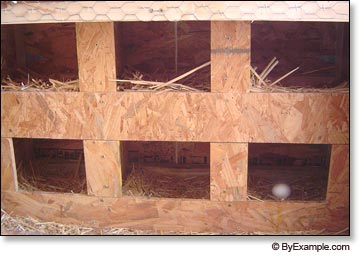My son has just bought a nearly new home that is out in the country and has a large yard. His wife wants a few chickens and they would like me to build something to house and care for them. Even though I was raised on a farm we never raised chickens so I am looking for some help with what minimal things I might build to help them out? Any suggestions would be appreciated or referral to a site where I might obtain information. I think they are talking about 6 to 10 chickens.





 Reply With Quote
Reply With Quote





